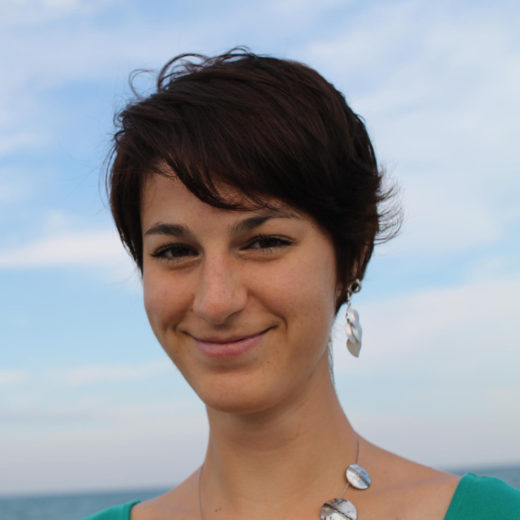Thousands of Tonnes of Shellfish Have Died in Southern France | Hakai Magazine
The Thau Lagoon in southern France is a large and important site for shellfish aquaculture in the Mediterranean. Photo by Didier Zylberyng/Alamy Stock Photo
Despite the losses, hopes remain high that environmental management measures can save the shellfish industry from even more devastation.
Authored by
byWordcount
September 14, 2018 | 600 words, about 3 minutesThis story is over 3 years old.
Article body copy
For fisherman Jean-Christophe Cabrol, the arrival of la malaïgue in the Thau Lagoon in southern France this August was like watching a wildfire slowly devour an entire forest. Only in this case, the forest was underwater—and the conflagration resulted in the deaths not of trees but of thousands of tonnes of mussels and oysters.
“There’s nothing we can do to protect them except move all the shellfish somewhere else,” Cabrol says. “But it’s very hard to move all of them. Some people who tried to move their shellfish to rafts in other locations still lost everything, because the malaïgue hit there as well.”
Malaïgue is a natural phenomenon that has been observed in lagoons near the Mediterranean Sea for decades, most recently in 2006. It arrives when a lack of wind combines with high water temperatures, resulting in a reduction in the amount of oxygen in the water. The first sign of the malaïgue’s arrival is a white discoloration of the water, signaling the growth of anaerobic bacteria. That’s followed by the strong stench of sulfur.
Once triggered, malaïgue can spread across huge stretches of water in days, killing fish and shellfish alike. The only thing that ends the phenomenon is the return of the wind. Within three days to a week, the surface turbulence caused by blowing wind can oxygenate the water enough to sustain some shellfish, even if the water temperature remains high.
This summer, unprecedented high temperatures scorched countries across Europe, from the Arctic Circle to the Mediterranean Sea. In the Thau Lagoon, 30 kilometers southwest of Montpellier, France, that meant water temperatures above 29 °C persisted for more than a week. The heat in itself was enough to kill virtually all the mussels growing in the lagoon, since they struggle to survive in water hotter than 27.5 °C.
Oysters can hold out in water as warm as 30 °C, but once the malaïgue set in, many quickly succumbed to the lack of oxygen. Within a week, 2,703 tonnes of oysters died, along with 1,218 tonnes of mussels. As the site of the largest shellfish aquaculture industry in the Mediterranean, the losses in the Thau are a huge blow for thousands of people. In all, the dead mussels and oysters represent a loss of nearly US $7-million, according to the regional government.
Cabrol, the president of an advocacy organization for shellfish producers, has now gone through two incidences of malaïgue. His father, also a fisherman, worked through three of them. Even with the risk of future malaïgue events, Cabrol remains optimistic and is training his son to take on the same career.
This hopefulness is shared by marine biologist Franck Lagarde, who works for the French Research Institute for Exploitation of the Sea. Lagarde says environmental efforts, including everything from reducing runoff from nearby farms to rebuilding the population of aquatic plants, have improved the health of the Thau Lagoon ecosystem.
“The return of seagrasses has been especially important. They seem to play a mitigating role in this type of event, since they provide more oxygen to the environment,” Lagarde says.
But the long-term fate of shellfish in the region is less certain.
As demonstrated this year, mussels are extremely vulnerable to higher water temperatures. Yet scientists are still unsure how regional wind patterns, the main player in malaïgue, will be affected by climate change. The phenomenon will undoubtedly continue to happen, Lagarde says, though not necessarily more frequently.
Lagarde thinks it’s important to watch these lagoons as they respond to rising temperatures and increasing atmospheric concentrations of carbon dioxide. “They’re like fragile mirrors of the future,” he says. “What’s happening in lagoons today is what will happen in coming years in other ecosystems.”
Article footer and bottom matter
Sign up for the weekly newslstter
Sign up for our weekly newsletter
Author bio
Lorraine Boissoneault is a freelance reporter in Chicago, Illinois who writes about the natural world, archaeology, travel, history, and adventure. Her first book, The Last Voyageurs, which relates the journey of 23 young men who canoed from Montreal, Quebec to the Gulf of Mexico, was published in 2016.

Tags
Topic:
Geographic Region:
EuropeOceanographic Region:
Mediterranean SeaSpecies:
ShellfishScientific Field/Discipline:
Cite this Article:
Cite this Article: Lorraine Boissoneault “Thousands of Tonnes of Shellfish Have Died in Southern France,” Hakai Magazine, Sep 14, 2018, accessed November 27th, 2021, https://hakaimagazine.com/news/thousands-of-tonnes-of-shellfish-have-died-in-southern-france/.
By accepting you will be accessing a service provided by a third-party external to https://oc3anclub.com/

